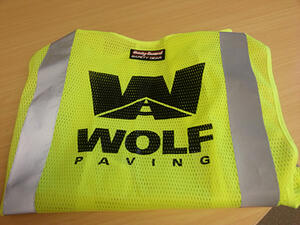There is a housing crisis in the UK. According to the National Federation of Builders, the answer is simple: build more homes.
But, critics say it is more complex than this. Brown land has to be found and planning permission granted. And, say others, the construction industry is not geared to meet such a massive upsurge in building demand. The results will be shoddy buildings and poor-quality homes for homebuyers and tenants.
But there could be a solution that means a surge in new homes coming to the market is possible. Rather than using bricks and mortar or breeze block and concrete, the solution is modular building, using a wood frame or steel frames, along with other readily available materials.
The modular build industry can support the rapid growth in the construction industry and here’s how;
SPEED is of the essence
On the one hand, you may assume that quick building means a final product of dubious quality. It is right to be cautious, especially when we are discussing people’s homes. This is a place of sanctity, a place where we should be warm, safe and comfortable.
We have seen poor housing in the past and in modern times – the draughty post-war prefabs and the anonymous looking housing estates where walls aren’t straight, and quality of the fixtures and fitting flimsy at best.
Speed in terms of modular building is not because the design is poor or the construction hurried, but because the methods of construction and materials used vary from those of a traditional build.
Within days, the outer walls of a modular building can be erected. Only a few days later, the interior walls and roofing frames can be complete. In fact, research shows that a modular build takes around half the time of a traditional building.
For a construction industry that needs to build good quality housing and fast, modular building is the answer.
OFF SITE construction
One of the issues with traditional building is often the location and access to the building site. For example, in cities and towns, building in a busy urban landscape brings additional costs. Difficulty accessing the site also leads to delays, again an expensive problem but also one that slows down progress.
With modular building, there are few worries of this nature and that is because the construction happens off site. In most cases, the houses are built in a factory setting and then shipped to their location. Where access is difficult, the homes can be delivered ‘flat-packed’ and put together on site.
Utility points can be added as part of the construction process, with the components fixed into position once the building is erected.
This makes this form of building friendly to the local community and businesses, as well as neighbours of the building site as there is no heavy machinery pounding away, day after day for months on end.
COST-EFFECTIVE housing solutions
Another factor that slows down the construction of new homes is who is going to pay for the building work? One of the issues within the housing crisis is affordability. For new buyers, it takes on average 20 years to save up a deposit on a home. By the time they have saved the deposit, there will be new hurdles to jump through.
And so, building housing estates in the traditional style could be a risk. Can people afford to buy? But also, is the style of home being built what they want or need?
Another issue with the housing crisis is that even if someone is lucky enough to get on the housing ladder when they need to buy a bigger property – e.g. more bedrooms for a growing family – they can’t afford to do so.
The solution is to bring more supply to the market place. And this means more houses. Modular building consumes fewer materials and resources, and are faster to build and that means they are cost-effective. With these substantial savings passed on to the buyer, more people will be able to afford a home that suits their needs.
HIGH-QUALITY in every aspect
From design to completion, to delivery to style, to aesthetic appeal, everything about a modular building is attractive. And that means the housing market will not be awash with sub-standard homes, but high-quality properties that people want.
For modular build specialists, the building of modular homes to add to the dry well of the housing market is a no-brainer. But is the great British public ready for modular homes?
MTX Contracts designs and constructs modular buildings for clients in the UK and beyond. Specialising in bespoke healthcare buildings, they understand how modular building is the future of the construction industry.
The post
Why Modular Construction CAN Support Rapid Growth in the Construction Industry appeared first on
http://ukconstructionblog.co.uk



 We utilised the services of more than 1,200 different subcontractors last year – from major businesses working on our behalf on a number of projects right down to small, niche companies working on one-off projects.
We utilised the services of more than 1,200 different subcontractors last year – from major businesses working on our behalf on a number of projects right down to small, niche companies working on one-off projects. One question we often hear at Wolf Paving has to do with driveway replacement:
One question we often hear at Wolf Paving has to do with driveway replacement:

 Frequent reports of distracted driving incidents and injuries occurring in work zones have become an increasing concern among Wisconsin residents.
Frequent reports of distracted driving incidents and injuries occurring in work zones have become an increasing concern among Wisconsin residents.

